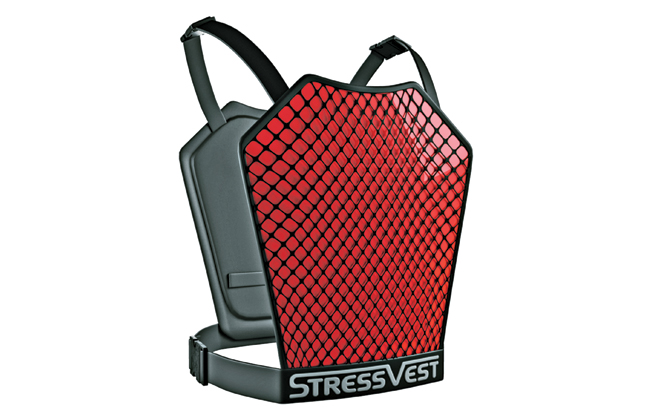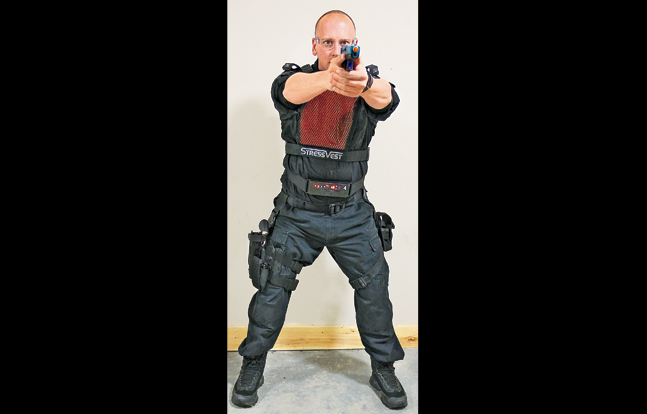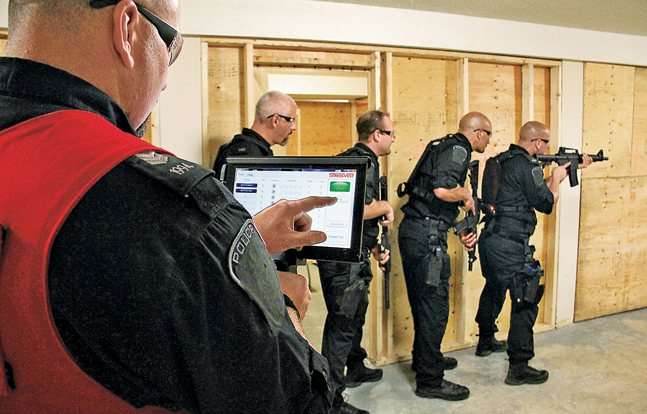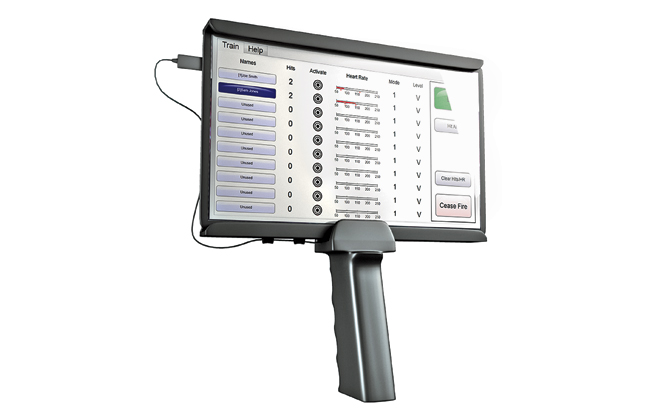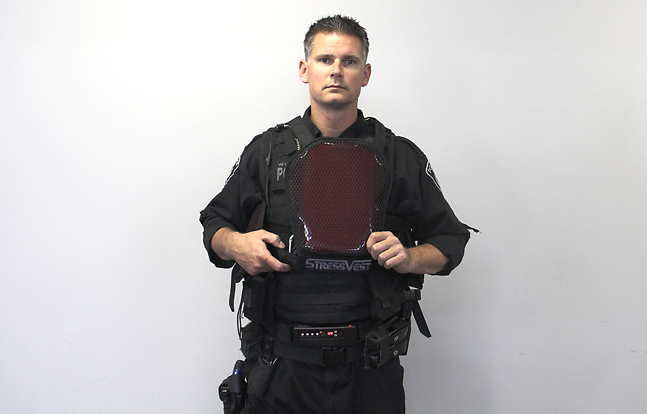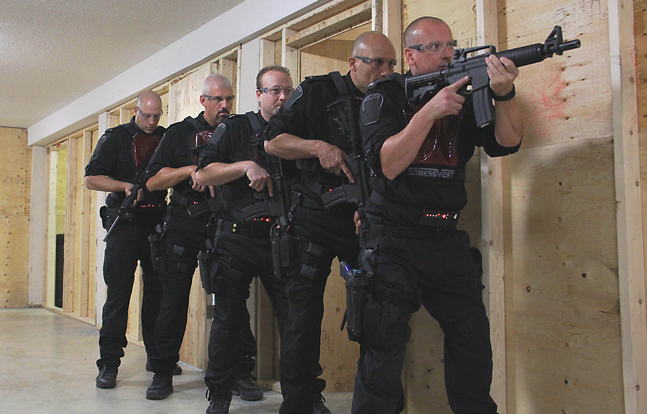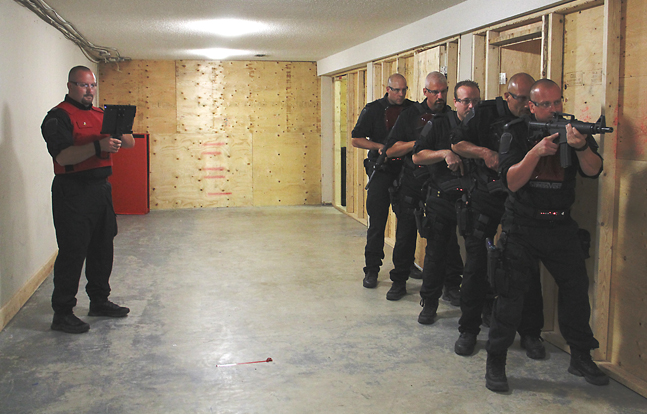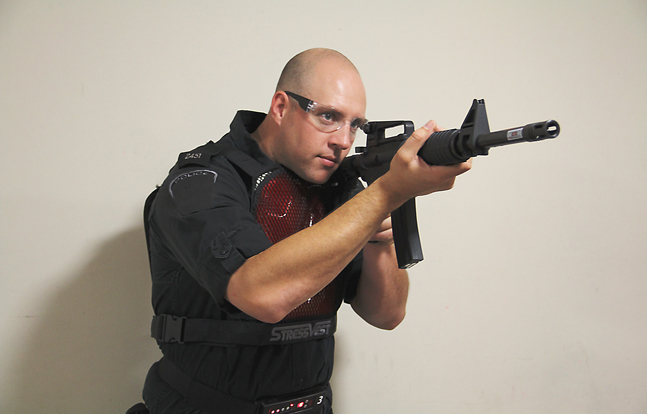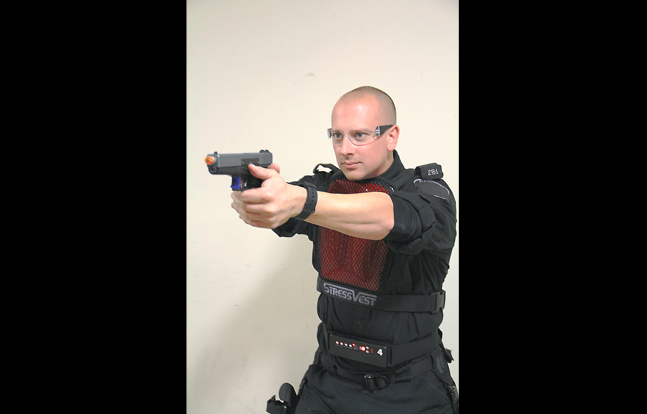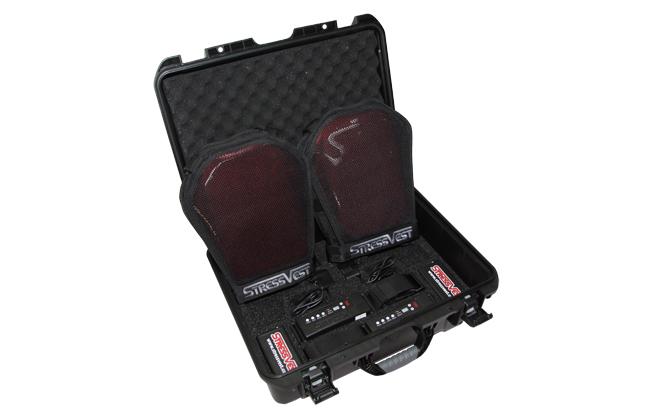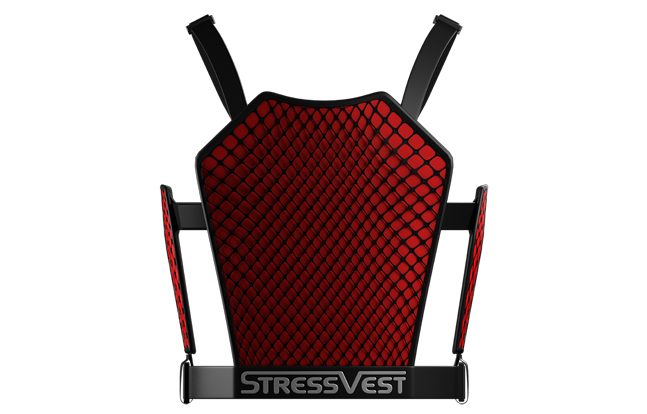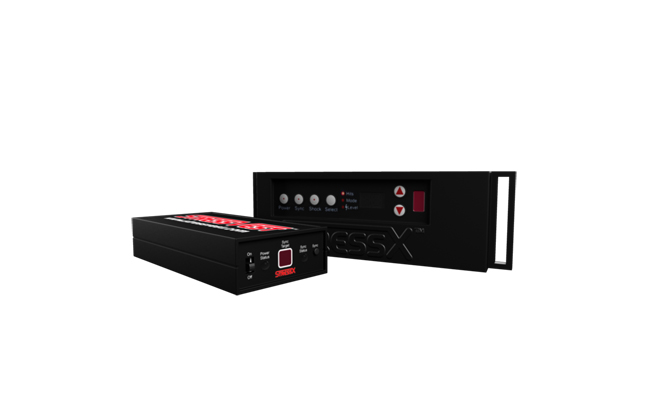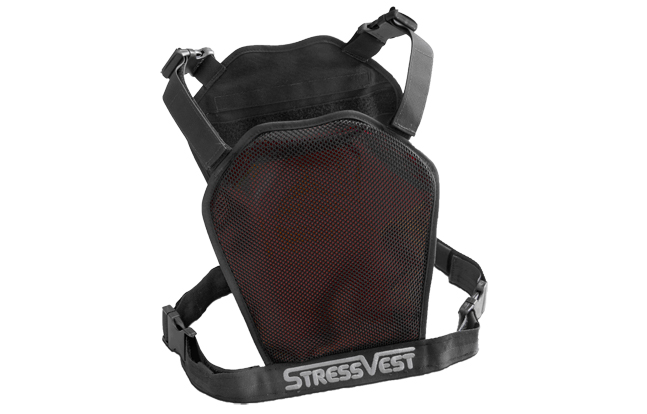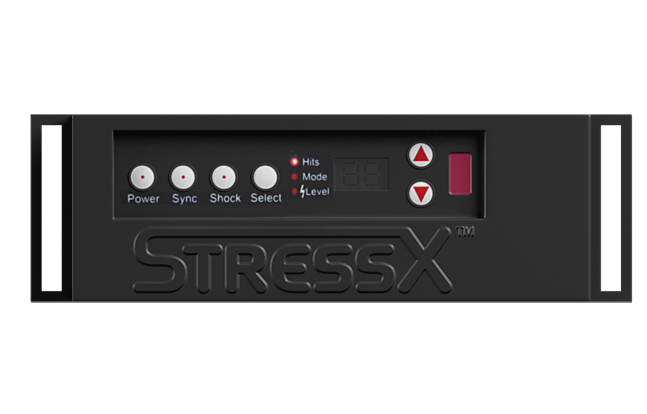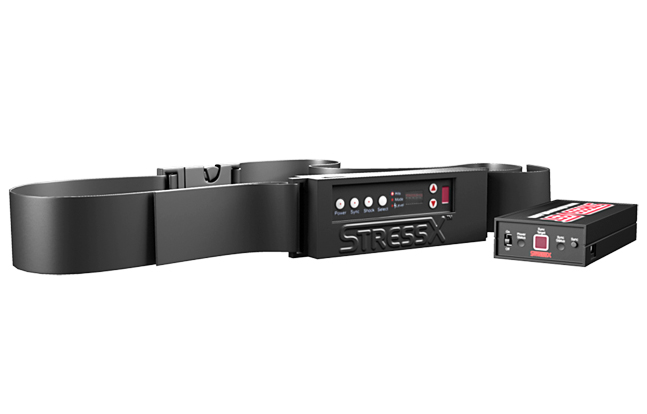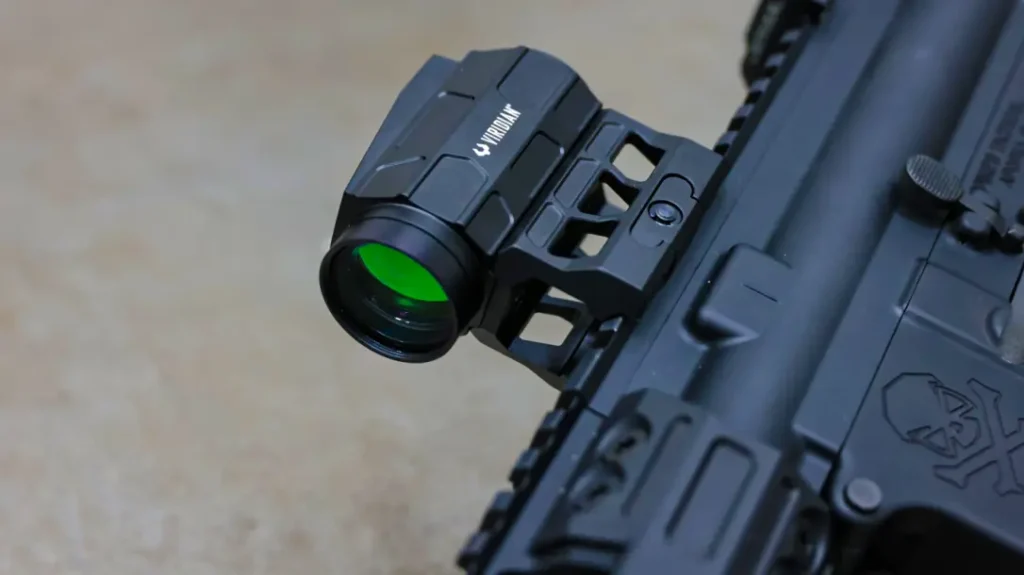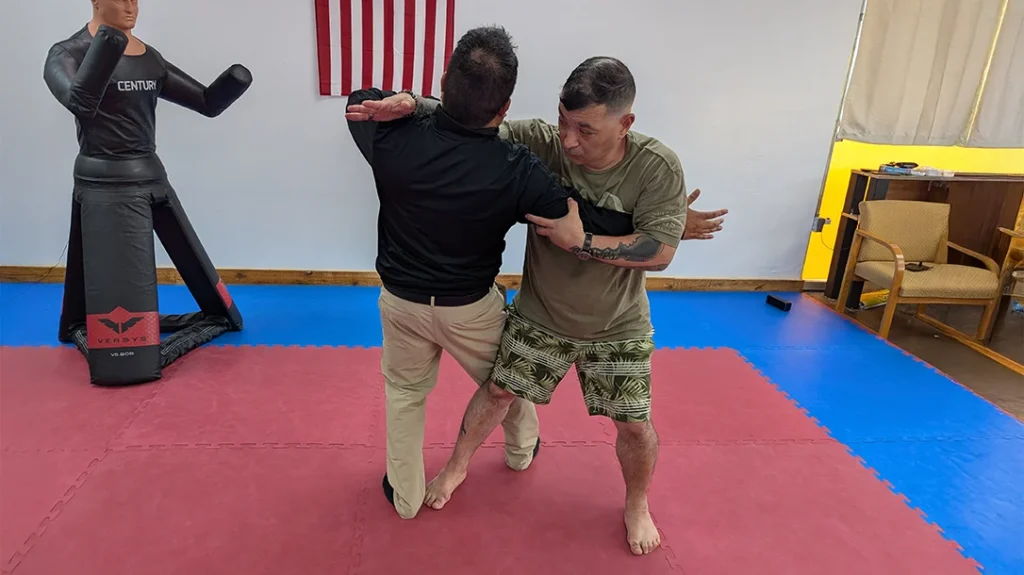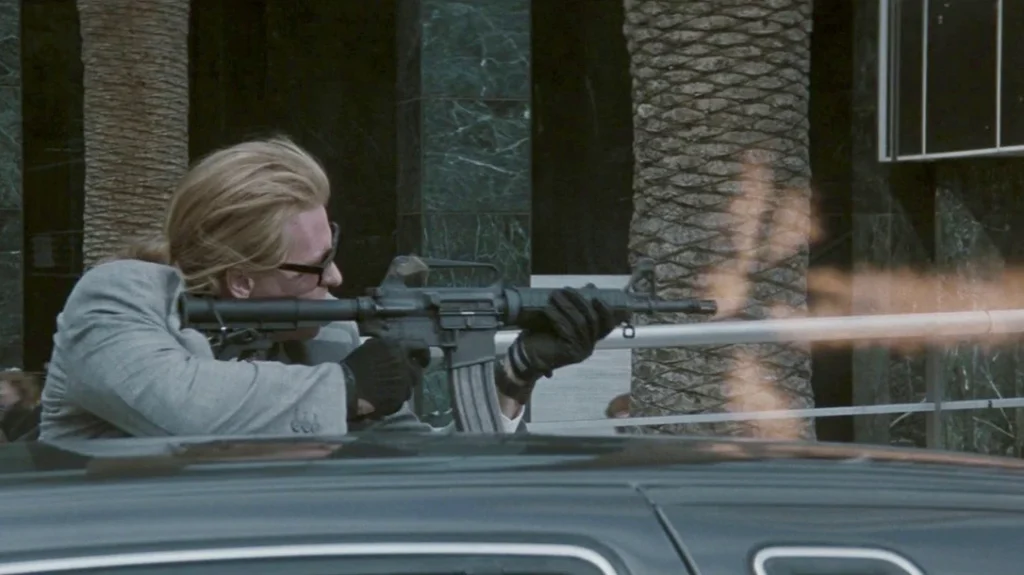It should be the goal of every law enforcement firearms instructor to make training as realistic as possible. “Training saves lives” is an axiom that has been proven true over and over again. But training must be relevant and realistic. Of course, making training realistic is easier said than done. And with reduced staffing and ammunition availability due to budget cuts, making your firearms training street relevant is more difficult than ever.
Standing in a line of shooters at the live-fire range is only one part of the preparation for armed encounters. Truth be told, line training bears little resemblance to most LE shootings. Yet many trainers get stuck there, even though numerous training modalities, practice styles and methods exist to help prepare our officers.
Confrontation simulation is a segment of training that should be incorporated. “Force-on-force” training allows officers to practice LE fundamentals in various scenarios and forces trainees to work through the effects of sympathetic nervous system (SNS) reaction (i.e., fight or flight). The officer must apply learned tactics and techniques, such as the use of cover, while working under the effects of the body’s stress chemicals and perceptual distortions. Put simply, the officer must focus on running the gun and getting rounds on target despite shaking hands, impaired judgment and tunnel vision and hearing.
Advertisement — Continue Reading Below
Over the course of my 30 years in law enforcement, I’ve played with all of the major force-on-force training tools. All have their place, but they tend to be destructive to the physical environment and must be used with varying degrees of safety equipment. None can be used without protective eyewear, and the higher-velocity marking cartridges require the role-players to protect themselves with padded suits, gloves and helmets. These marking cartridges can break glass and leave marks (and scars) on human flesh as well as on walls.
Continue Reading: Setcan StressVest System | Force-On-Force Law Enforcement Training | Review
Advertisement — Continue Reading Below
StressVests
Several years ago, my colleagues and I attempted to devise a realistic edged-weapon-defense training method. We used rubber knives and dipped the edges in red paint. This showed the students (who wore white t-shirts in the exercise) how dangerous knives can be and how they must use proper blocks and parries as well as evasive footwork to avoid getting “cut.” The training was OK, but it didn’t become truly realistic until the advent of the Shocknife. Made by the Setcan Corporation, located in Canada, the knife delivered an adjustable electric shock on coming into contact with a person’s skin or clothing. In other words, a pain penalty of electricity could be given to officers who in training failed to avoid the blade. All of the sudden, students were very motivated to avoid the simulated edged weapon.
“Wearing the StressX belt set to vibrate, I practiced drawing from the holster and getting accurate fire on target quickly.”
Well, our friends from the north have done it again. With the introduction of Setcan’s StressVest, force-on-force training can now be safely conducted anywhere. The system is composed of several different parts. First is the vest, which includes both front and rear panels measuring 13 inches at the widest and 12 inches long. These panels are made of material that is sensitive to strikes from laser pulses. To be used in tandem with laser-firing pistols, the vests are designed to provide a target for high center-mass or preferred target areas on a human torso. Capable of being struck through lighter-colored clothing, the StressVest can be concealed under garments or behind glass, such as car windshields. Also available are side panels and a training hat to provide side and head target areas (hits to the face, and not just to the hat, activate the hat). The panels are connected to a transmitter that wirelessly sends a signal to the StressX Training Belt. The belt records the hits and, most importantly, can be configured to give the wearer a vibration or an adjustable shock to indicate an impact. That’s the stress indicated by the StressVest name. Quite simply, if while taking cover your vest is exposed and the role-playing bad guy hits it, you are instantly given a vibrating or electric shock to remind you of your bad tactics.
Advertisement — Continue Reading Below
Laser Shots Fired
Setcan sent me a two pistol/vest StressVest system for testing and evaluation. Several pistol models are available, including dry fire, CO2-powered recoil and blank-firing versions for pistol training. I chose a dry-fire pistol system for testing. Setting up the vest and belt transmitter/receivers took five minutes.
My agency is in the middle of a training cycle on single-officer responses to active killers. My bureau training partner and I immediately saw the StressVest’s applicability to this type of training. With one person outfitted in a StressVest playing the bad guy and one vest-wearing officer responding to a call of shots fired with an active shooter on scene, we were able to simulate multiple scenarios. With the StressVest, this type of training can be done at once and in almost any environment, such as in a school, courtroom, library or police station after hours. No other force-on-force system on the market can be deployed as quickly without risking damage to the physical structure and environment.
Advertisement — Continue Reading Below
So, we’ve got the force on force covered with StressVest. What else can it do? Hanging one of the panels at chest height, I used the system to engage in my own drawstroke and movement-off-the-attack-line practice. Wearing the StressX belt set to vibrate, I practiced drawing from the holster and getting accurate fire on target quickly. I was given instant feedback if my laser “shot” was accurate. I could use the entire panel as a target or simply clip a piece of cardboard over part of the panel for tougher shots requiring more accurate fire. Because of the system response, each quick shot fired did not send its own vibration to the belt, but multiple shots gave me a couple or more vibrating indicators.
Continue Reading: Setcan StressVest System | Force-On-Force Law Enforcement Training | Review
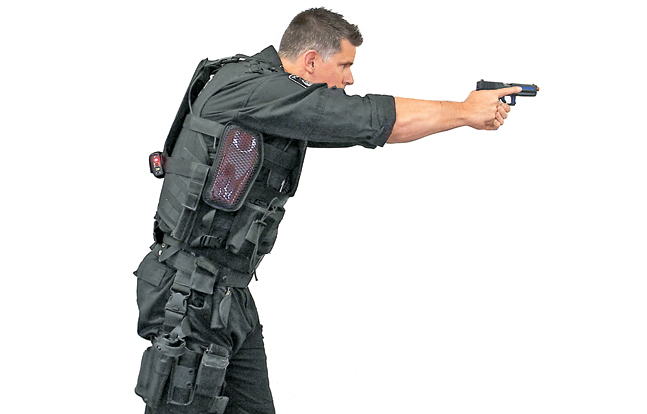
Next up, and an often-neglected training area, was wearing a StressVest while training with a partner or partners also armed and wearing a vest. In a gym or even outside, this type of training can teach officers 360-degree awareness, movement, responding to the threat of a suspect drawing a pistol from concealment, dynamic use of cover, following through, working in subdued lighting, and on and on—all without the need for helmets, padded suits or gloves.
Advertisement — Continue Reading Below
The StressVest has several different system options available. Both pistols and carbines can be outfitted with lasers, and an even more sophisticated training version allows the instructor to monitor, give shocks to students and even give a vibration to a hidden role-player to assault, all from a handheld computer tablet. To say that I think the StressVest is cool is an understatement.
Like many of man’s most important endeavors, the quest to make firearms and tactics training relevant, realistic and repeatable is a difficult one. But maybe the way to “get from there to here” is not through ballistics, but rather through electricity and innovation. The StressVest offers a unique, low-cost way to fill the training gap between live fire and marking cartridges—one that allows users to amass sufficient repetitions and experience a unique “pain penalty” for making a mistake. Like a rat in a laboratory, man has a fear of electric shock (at least a smart man) and will do things to avoid it. Proving to the officer that doing things right—using cover properly, getting off the “X” to avoid a suspect’s fire and understanding that giving up after being shot is not acceptable—pays off in training and will save a life on the street. Do things properly, no electric shock; screw up and you learn from your mistakes. Shocking, isn’t it? For more information, visit setcan.com or call 866-353-5055.
Advertisement — Continue Reading Below
